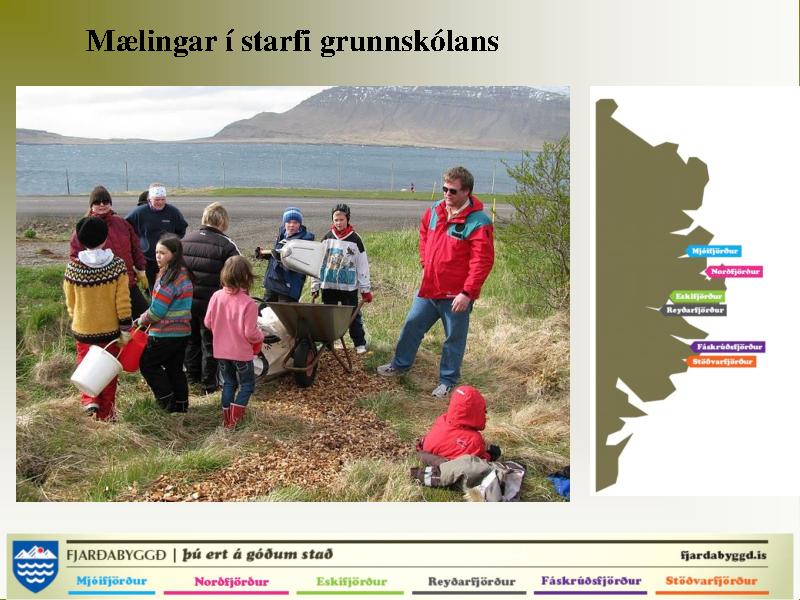Progress
The Icelandic National Exams are held annually for children in 4th, 7th and 9th gradea.
The grades are normal distributed on a scale ranging from 0 – 60, where the national average is 30 and the standard deviation is 10.
Figure 3. Average of normal distributed 10tha grade test scores in East Iceland 2003-2017 compared to national average. No test were performed 2016.
Figure 4.Average of normal distributed 9tha grade test scores in East Iceland 2017-2020 compared to national average.
a: According to regulation on Icelandic National Exams, that came to force in March 2017, the exams are held in spring semester of 9th grade instead of fall semester of 10th grade before.
Updated: December 2, 2020
Source: Directorate of Education
Metrics, Targets and Monitoring Protocol
What is measured?
Results from Icelandic National Exams (Project effect: induced).
Monitoring Protocol
Information are retrieved annually from Directorate of Education
Targets/Expectations
Average test score in East Iceland greater than or equal to national average.
Possible countermeasures
Not applicable, monitoring only.
Changes of indicator
In annual general meeting 2018 a change in wording was approved.
| Orginal text | Changed text |
|---|---|
|
Results from Icelandic National Exams in compulsory school (4th, 7th and 10th grade) in East Iceland and nationally |
Results from Icelandic National Exams in compulsory school in East Iceland and nationally. |
Rationale for changes: New regulation came to force in March 2017 stating that Icelandic National Exams shall be held in spring semester of 9th grade instead of 10th grade before.
This indicator was originally number 7.2. It was then named Quality of Schools and can be found under that number in documents of the project from 2005 and 2006.
The indicator number has been changed twice.
| Year | Nr. | Indicator name |
|---|---|---|
| 2020 | 1.3.1 | Icelandic national exams |
| 2007 | 1.17a | Quality of Schools |
Baseline
Figure 5. 10th grade comprehensive exam results for various regions in 2002. Source: Námsmatsstofnun.
Rationale for Indicator Selection
New big companies can affect nearby schools. Increased number of inhabitants during construction and operational phases of the projects means more children and increased work load in schools. This includes both the direct effects of employees and contractors, as well as the indirect demand generated by people moving to the project area in association with job opportunities created directly or indirectly by the projects. The object of the schools therefore will be to maintain the former quality of education to an increasing and possibly a more culturally diverse student population.
From phase I/II report on indicators and baseline from April 2005
Further reading

Mælingar í starfi grunnskólans
Erindi Þórodds Helgasonar á ársfundi Sjálfbærniverkefnisins 2014
Regulation on the arrangement and implementation of standardized examinations in compulsory schools (Icelandic)
